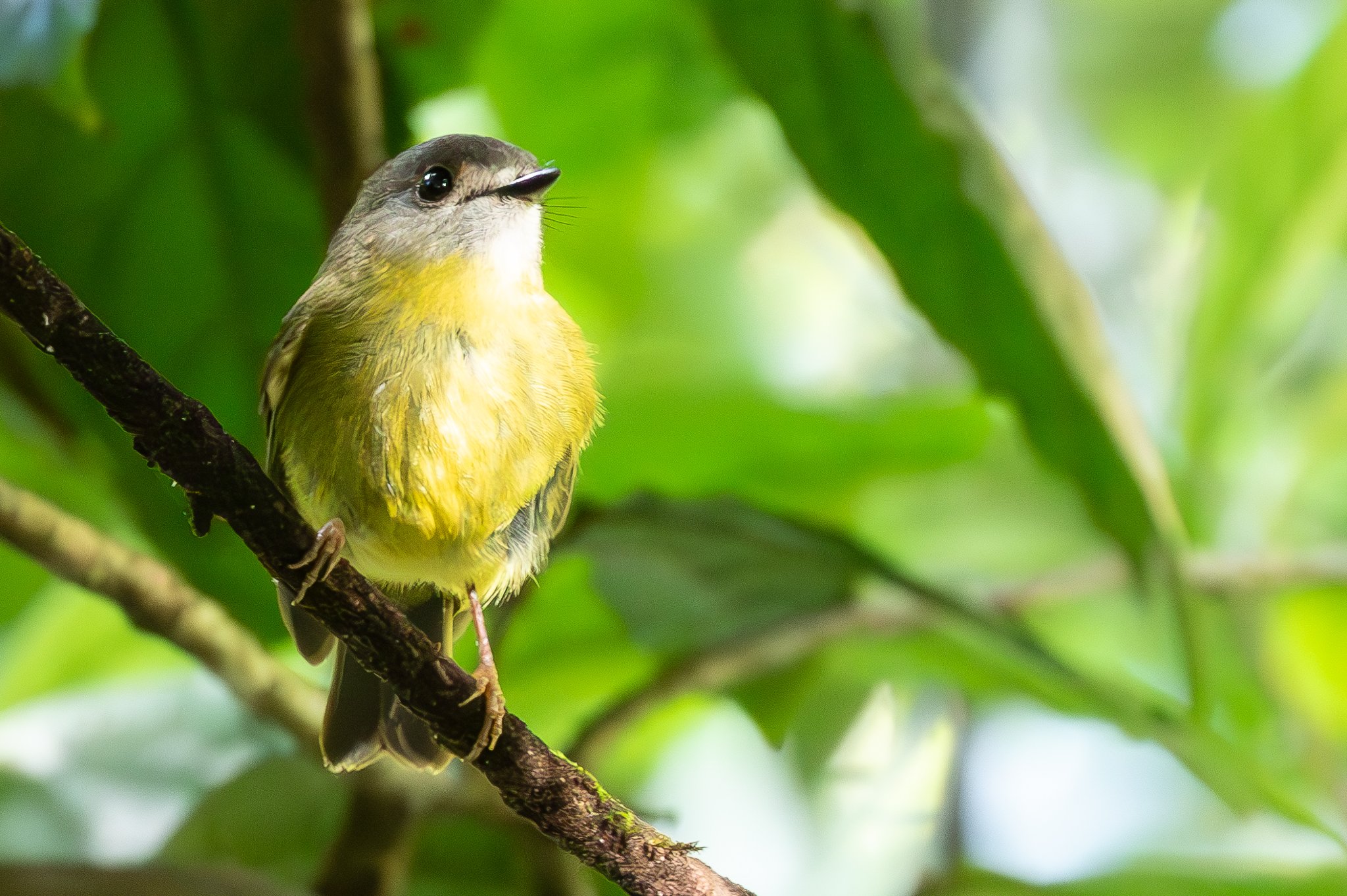The Big Scrub Loop walking track is in Nightcap National Park, near Lismore, New South Wales. The track passes through magnificent subtropical rainforest dominated by enormous fig trees, Giant Stinging Trees and huge buttressed Yellow Carabeen. The Nightcap Range has been designated an Important Biodiversity Area (IBA) by Birdlife International. The key IBA bird species found in the park are the Albert's Lyrebird, Green Catbird, Pale-yellow Robin, Australian Logrunner, Paradise Riflebird, and Regent Bowerbird.
Four of the six key IBA species were recorded during this weeks survey by the Byron Bird Buddies; the Green Catbird, Logrunner, Paradise Riflebird and this Pale-yellow Robin.The three hour survey recorded thirty plus plus species, many heard rather than seen.The Pale-yellow Robin is a true rainforest inhabitant feeding on insects close the ground, amongst the lawyer vines.
Nightcap National Park on the Big Scrub Loop wallking track.
A dozen Logrunners made their presence known with a loud and distinctive “be-kweek-kweek-kweek”. The white bib identifies this bird as a male.
The tortured cat wail of the Green Catbird provides a disconcerting backdrop to the continual chorus of bird calls in this prolific rainforest. There were only glimpses of this species which likes to remain high in the forest canopy.
This Large-billed Scrubwren was one of the small birds feeding at lower levels of the forest together with Brown Gerygone and Brown Thornbills. Up in the canopy Scarlet Honeyeaters and Lewin’s Honeyeaters were calling.
The northern ranges of New South Wales are home to a wide variety of pigeon species. The call of the Brown Cuckoo-Dove seen here was heard a number of times. Other pigeons recorded were the Wompoo Fruit-Dove, White-headed Pigeon, Pacific Emerald Dove, Wonga Pigeon, Topknot Pigeon and Rose-crowned Fruit-Dove.
Beautiful fungi grace the undergrowth.












